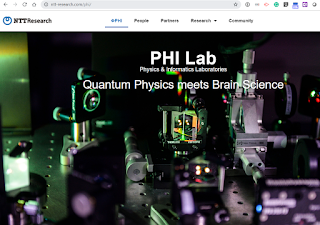NTT Research has signed a collaboration agreement with Caltech to develop a high-speed Coherent Ising Machine (CIM).
A CIM is a network of optical parametric oscillators (OPOs) programmed to solve problems that have been mapped to an Ising model, which is a mathematical abstraction of magnetic systems composed of competitively interacting spins, or angular momentums of fundamental particles. The CIM is particularly suited to combinatorial optimization problems that are beyond the capabilities of current computer processors to solve. NTT Research and Caltech will jointly develop a high-speed, miniature CIM, consisting of an on-chip 100 GHz pulsed pump laser source and on-chip parametric oscillator device.
The principal investigator at Caltech for this four-and-a-half-year joint project is Kerry Vahala, the Jenkins Professor of Information Science and Technology and Applied Physics and Executive Officer for the department of Applied Physics and Materials Science. Professor Vahala has pioneered the use of nonlinear optics in high-Q optical micro-resonators. Leading this effort at NTT Research is PHI Lab Research Scientist, Dr. Myoung-Gyun Suh, an expert in on-chip optical sources and their application to precision measurements.
“We are delighted at the prospect of working with Professor Vahala to develop an extremely small and high-speed CIM,” said NTT Research PHI Lab Director, Yoshihisa Yamamoto. “This work will advance our understanding of the CIM’s capabilities, map well with ongoing and related work with other institutions, provide new demonstrations of this awesomely powerful new information system and, we hope, set standards for the CIM’s speed and size.”
To date, the NTT Research PHI Lab has established ten joint research projects as part of its long-range goal to radically redesign artificial computers, both classical and quantum. To advance that goal, the PHI Lab has established joint research agreements with seven universities, one government agency and quantum computing software company. This is the second joint research agreement with Caltech. The other institutions of higher education are Cornell University, Massachusetts Institute of Technology (MIT), Stanford University, Swinburne University of Technology, the University of Michigan and the University of Notre Dame.
NTT Tackles Artificial Spin for Photonic Computation
Researchers at NTT and and Osaka University announced an important step toward photonic computation by developing a large-scale artificial spin network based on photonics technologies. The development targets a fundamental component for the coherent Ising machine (CIM), which utilizes interacting artificial spins realized with optical parametric oscillators (OPO) for computation of combinatorial optimization problems. The researchers generated more than 10,000 time-multiplexed OPOs using an optical fiber cavity as long as 1 km.
The researchers generated more than 10,000 time-multiplexed OPOs using an optical fiber cavity as long as 1 km.
The OPOs can be used as artificial spins for a large-scale CIM to solve combinatorial optimization problems in the real world. The research was published in the UK science journal “Nature Photonics” on April 18, 2006.
http://www.ntt.co.jp/news2016/1604e/160418a.html












